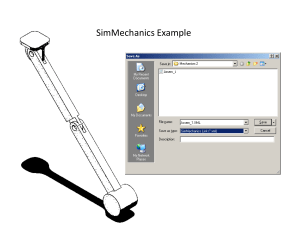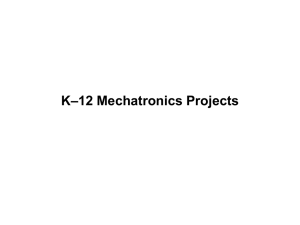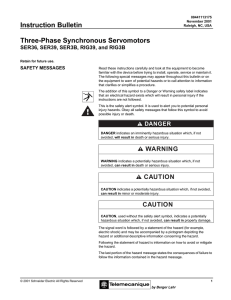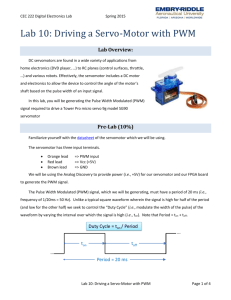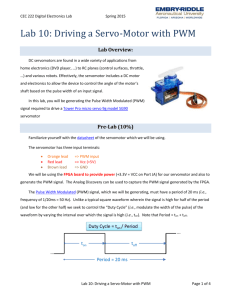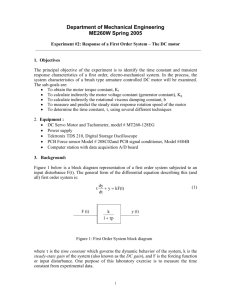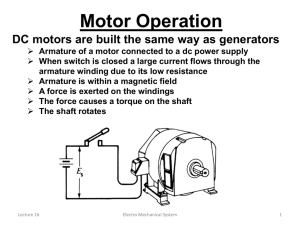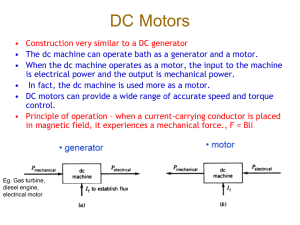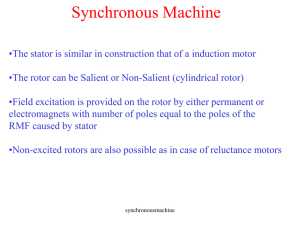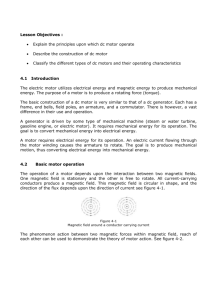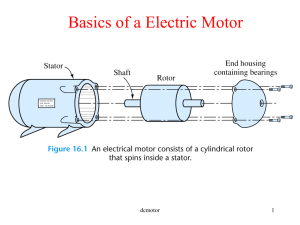Motor Modeling 2
advertisement
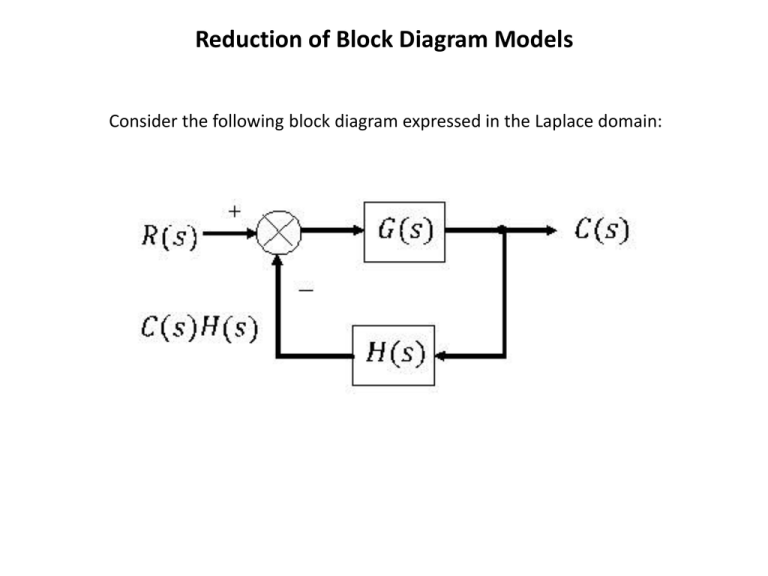
Reduction of Block Diagram Models Consider the following block diagram expressed in the Laplace domain: Reduction of Block Diagram Models Reduction of Block Diagram Models These block diagrams are equivalent Transfer Function of a DC Servomotor In the case of the DC servomotor: Electrical Time Constant of a DC Servomotor Consider the expression for motor armature current : A first order system can be expressed in “standard” form as follows: Electrical Time Constant of a DC Servomotor In the case of the motor used in the laboratory (Pittman 9232S003), the armature resistance is provided by the manufacturer in the datasheet as 7.38Ω and the armature inductance as 4.64 mH. This yields an electrical time constant of 0.63 ms; a value which is also confirmed in the datasheet. Since the maximum recommended motor voltage is 24V, the armature current is limited by the armature resistance to a maximum of 3.25A. The maximum motor power dissipation is therefore 78W although this power level cannot be tolerated indefinitely. Mechanical Time Constant of a DC Servomotor As demonstrated previously DC servomotor can be modeled as a second-order transfer function: If the electrical time constant of the motor is very small, it can be neglected and the motor can be modeled as a first-order transfer. Mechanical Time Constant of a DC Servomotor In the case of the motor used in the laboratory (Pittman 9232S003) the various parameters are listed in the data sheet. The mechanical time constant is listed in the motor datasheet as 14.4 ms. Mechanical Time Constant of a DC Servomotor Given that the electrical time constant is 22.6 times smaller than the mechanical time constant, it can be neglected in many applications and the motor can be effectively modeled as a first-order system. The no-load response to a 24V step input for both the second-order motor model (top) and first order motor model (bottom) are shown below for the motor used in the lab.

